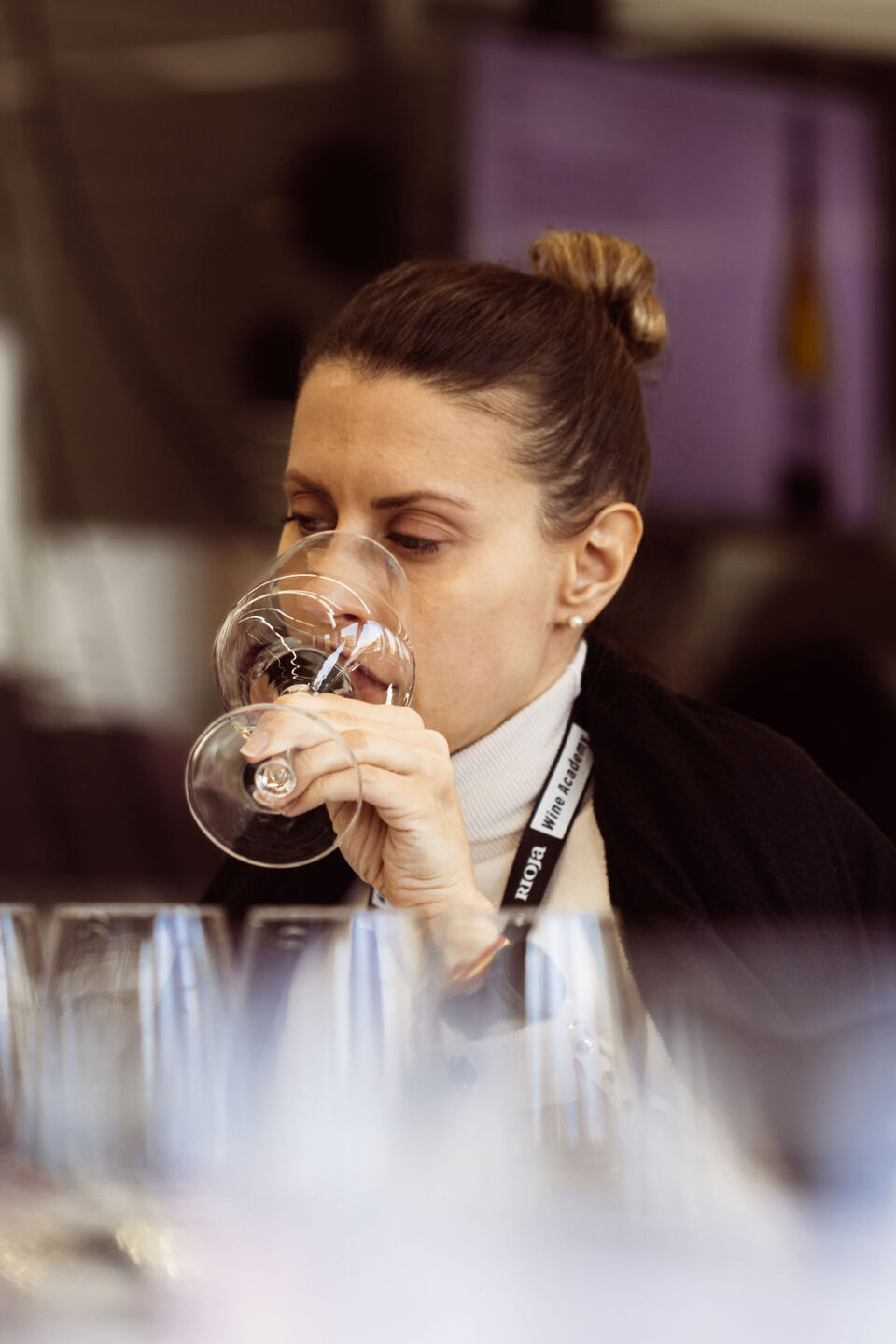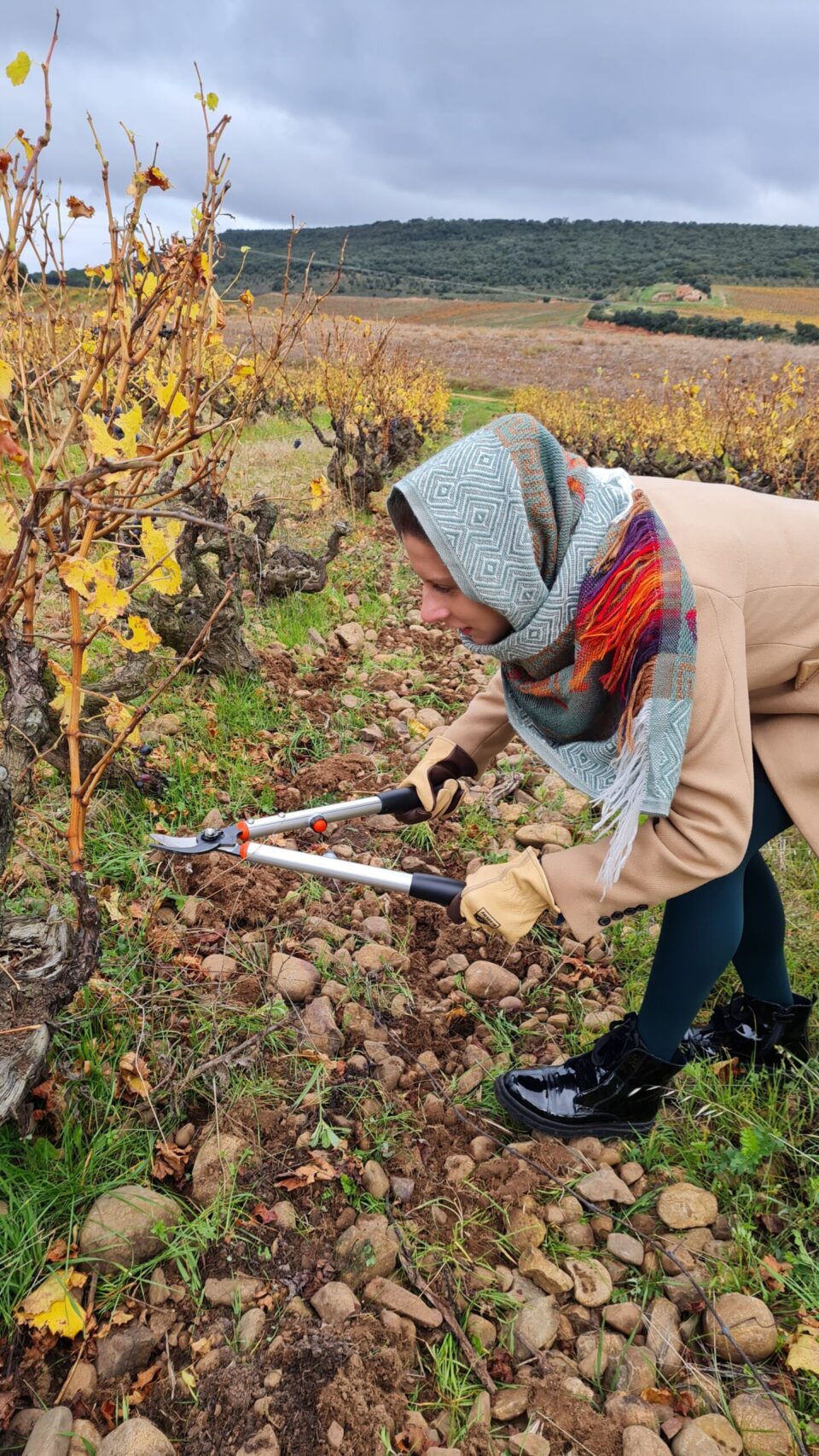Sommeliers in Serbia and the region have their hands full when it comes to popularizing traditional Spanish varieties Marija Radović has a soft spot for Spanish wines and believes that, in time, they will become a constant in the wine world of the region. In the meantime, she is working on sommelier education that will make recommending wines from the Iberian Peninsula to guests in Serbian restaurants easier.
Marija Radović has a soft spot for Spanish wines and believes that, in time, they will become a constant in the wine world of the region. In the meantime, she is working on sommelier education that will make recommending wines from the Iberian Peninsula to guests in Serbian restaurants easier.
Serbia’s wine industry seems to be expanding rapidly and the activities of your association testify to it. How did SERSA come to be and what is its primary role?
The Serbian Sommelier Association was founded in 2003 in Belgrade to educate the members, promote the profession, and raise the wine culture in Serbia. We grew and bigger challenges came; like organizing the first competition for the best sommelier in the Balkans where 13 countries participated. We also organized the second edition of the competition called Balkan Sommelier Challenge – Open Balkan in Serbia in November 2022, but as our reputation grew, so did the number of participants which doubled the one from the first edition as we welcomed representatives from 26 countries. This year, we host the ASI Best Sommelier of Europe, Africa, and Middle East competition. Between November 11 and 15, Belgrade will be visited by sommeliers from 45 countries, numerous wine experts, and world wine media. We plan to show Serbia in the best of lights, through workshops about Serbian wines and spirits, including visits to the wineries. We are greatly helped by the government of Serbia, and we hope that, after the competition finishes, we will have 45 wine ambassadors of Serbia.
Aged Spanish reds make a perfect match with our national cuisine
What was your first encounter with Spanish wines?
It was when, after graduating in Spanish language and literature, I traveled to Spain. But only when, during my work at the Trade and Economic Office of the Embassy of Spain, I came upon a famous Spanish winery, did my interest in the Spanish varieties and the terroir they come from, begin. Since then, I have not ceased to explore both more and less known regions and wine producers in Spain. Is there something one could describe as Spanish wine?
Is there something one could describe as Spanish wine?
Grapevine grows in all the 17 autonomous communities of this in many aspects unique country. It is hard to find a common denominator because there are as many as 17 wine regions with a Denomination of Origin (Denominación de orígen). That denomination covers a major part of the Iberian Peninsula that in the northwest touches the Atlantic Ocean, so present in the wines of Galicia, while in the wines of the south, we can feel the hot summer days of Andalusia.
What kind of Spanish wines are popular in Serbia and what are their characteristics?
I think that we and the Spanish are quite alike. In addition to the similarities in the mentality, we also share similar tastes. We like bubbles, so in recent years Spanish cava has become present on the shelves of Serbian wine shops, their aged reds make a perfect match with our national cuisine, so our sommeliers are happy to recommend them in restaurants. Those are wines made of Spanish autochthonous varieties that the Spanish winemakers are proud of, like Tempranillo or Mencia. Those varieties do not depict just the terroir where they are grown, but also the character of the Spanish people.
How do consumers of wine in Serbia react to Spanish wines?
It is impossible not to react to a Spanish wine. On the one hand, because they agree with us, and on the other because their price/quality ratio is perfect. However, some wines are not known enough, and when we don’t know something, we often are not sure how to approach it. Such is the case with the Sherry. This unusual wine is made in a special way called the solera procedure and it means that the wine is aged in wooden barrels under the yeast flower or exposed to oxygen. That gives it a special taste and smell, which may feel off to wine consumers from this part of the world, but the bartenders have of late found it to be useful in cocktails, so it can be enjoyed in Serbia as well.
The market is not familiar enough with what Spain has to offer
Do you find that Spanish wines are well-represented in the region? If not, what would you change?
Sadly, the Spanish wines are underrepresented in the region. In bigger cities, like Zagreb, they are present in restaurants, while in other places in Croatia, Bosnia and Herzegovina, and Montenegro, they have not been given the credit they deserve. Probably due to the need to stimulate the development of local winemaking, mostly local wines are offered in the region. I would say that the market is not familiar enough with what Spain has to offer. As a Spanish wine educator, I strive to, through my lectures, popularize Spanish wines among our sommeliers and stimulate them to offer their guests authentic Spanish wine experiences.
The story of Spanish viticulture started as a boom of relatively inexpensive wine, but in the meantime, Spain has managed to send to the market some of the most valued bottles on the planet. How do you think the wine industry will develop in Spain and how do you see the Spanish wine story continuing in Serbia?
In recent years, the taste of consumers has been changing and people seek wines with special character. The wineries respond by introducing innovations, so there is an increasing number of natural and biodynamic as well as organic sparkling wines. The young seek wines from the less represented varieties which perhaps do not have the official stamp of the state-prescribed period of aging, but they come from selected parcels and bear the mark of their producer and the terroir. Those wines are slowly finding their way to us, and I believe that through promotions of the Economic and Commercial Department of the Spanish Embassy, they will find a welcoming audience in Serbia. Our young people also want to try the wines from young wineries, and with a story behind which the love for the land and the grapevine can be felt.
What three Spanish wines would you recommend and why?
I will try to through these three wines depict the Spain I love. The first is red wine Reserva XR, which is a coupage of two autochthonous varieties Tempranillo and Graciano and it was aged 20 months in American oak. It is made in the winery called Marqués de Riscal in Rioja. Marqués de Riscal was a businessman, a journalist, and one of the two winemakers who started the traditional aging of wine in Rioja. For three consecutive years, this winery has come second in the competition for the best vineyard and winery in the world.
The second name is a cava Ana de Codorniu, brut nature, from the winery Codorniu, which is the oldest in Spain.
And thirdly, but not less importantly, we have a strongly sweet Sherry made of the Pedro Ximénez variety and coming from the Tio Pepe winery in the city of Jerez de la Frontera close to Cádiz. White Palomino grapes are sun-dried and after the fermentation given sort of a boost in the form of adding the pure wine distillate. The wine is then aged following the solera system. The result is an iodine-color wine, one of the sweetest in the world and with about 15% alcohol.